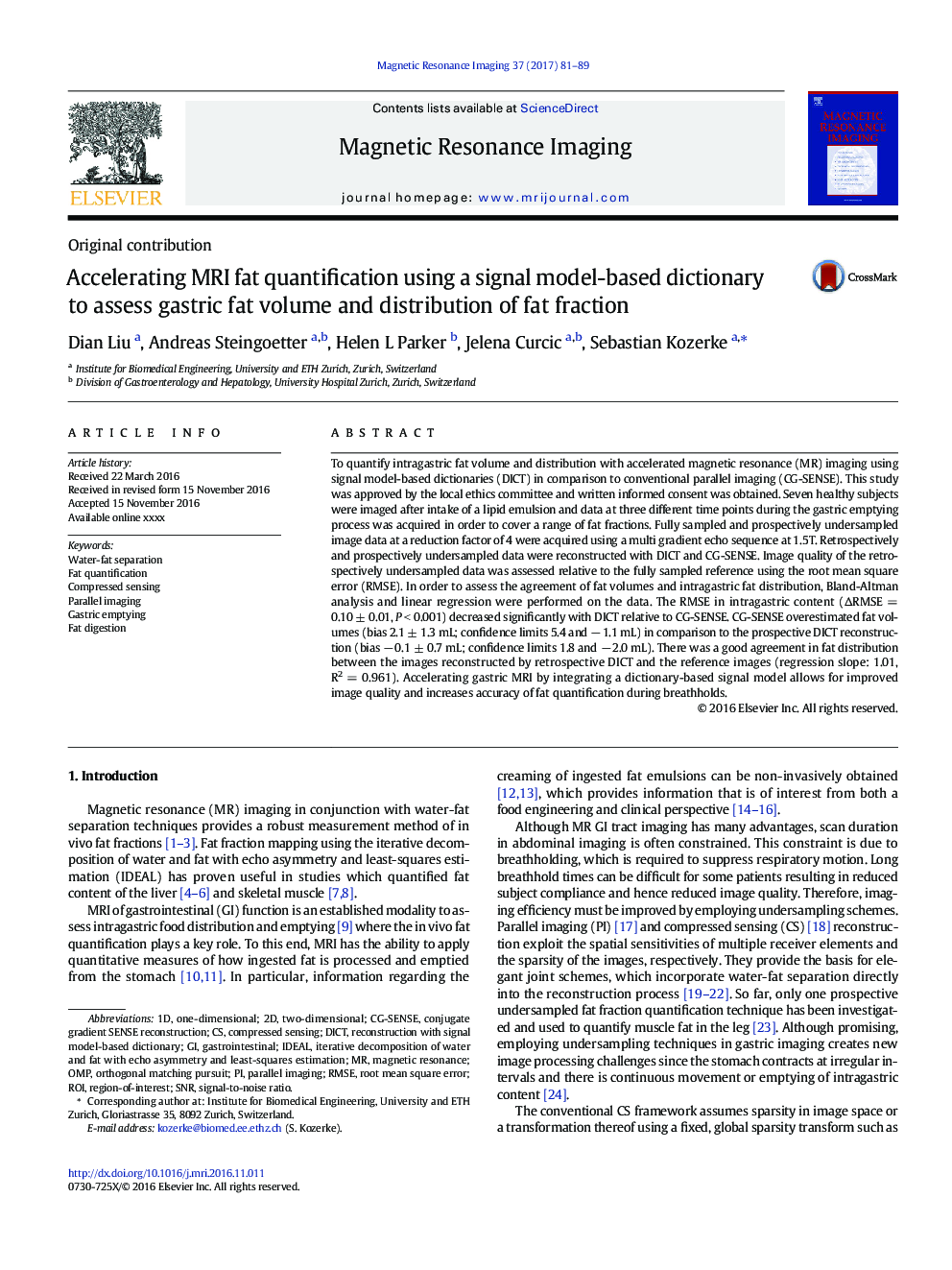| Article ID | Journal | Published Year | Pages | File Type |
|---|---|---|---|---|
| 5491393 | Magnetic Resonance Imaging | 2017 | 9 Pages |
Abstract
To quantify intragastric fat volume and distribution with accelerated magnetic resonance (MR) imaging using signal model-based dictionaries (DICT) in comparison to conventional parallel imaging (CG-SENSE). This study was approved by the local ethics committee and written informed consent was obtained. Seven healthy subjects were imaged after intake of a lipid emulsion and data at three different time points during the gastric emptying process was acquired in order to cover a range of fat fractions. Fully sampled and prospectively undersampled image data at a reduction factor of 4 were acquired using a multi gradient echo sequence at 1.5T. Retrospectively and prospectively undersampled data were reconstructed with DICT and CG-SENSE. Image quality of the retrospectively undersampled data was assessed relative to the fully sampled reference using the root mean square error (RMSE). In order to assess the agreement of fat volumes and intragastric fat distribution, Bland-Altman analysis and linear regression were performed on the data. The RMSE in intragastric content (ÎRMSE = 0.10 ± 0.01, P < 0.001) decreased significantly with DICT relative to CG-SENSE. CG-SENSE overestimated fat volumes (bias 2.1 ± 1.3 mL; confidence limits 5.4 and â 1.1 mL) in comparison to the prospective DICT reconstruction (bias â 0.1 ± 0.7 mL; confidence limits 1.8 and â 2.0 mL). There was a good agreement in fat distribution between the images reconstructed by retrospective DICT and the reference images (regression slope: 1.01, R2 = 0.961). Accelerating gastric MRI by integrating a dictionary-based signal model allows for improved image quality and increases accuracy of fat quantification during breathholds.
Keywords
Related Topics
Physical Sciences and Engineering
Physics and Astronomy
Condensed Matter Physics
Authors
Dian Liu, Andreas Steingoetter, Helen L Parker, Jelena Curcic, Sebastian Kozerke,
